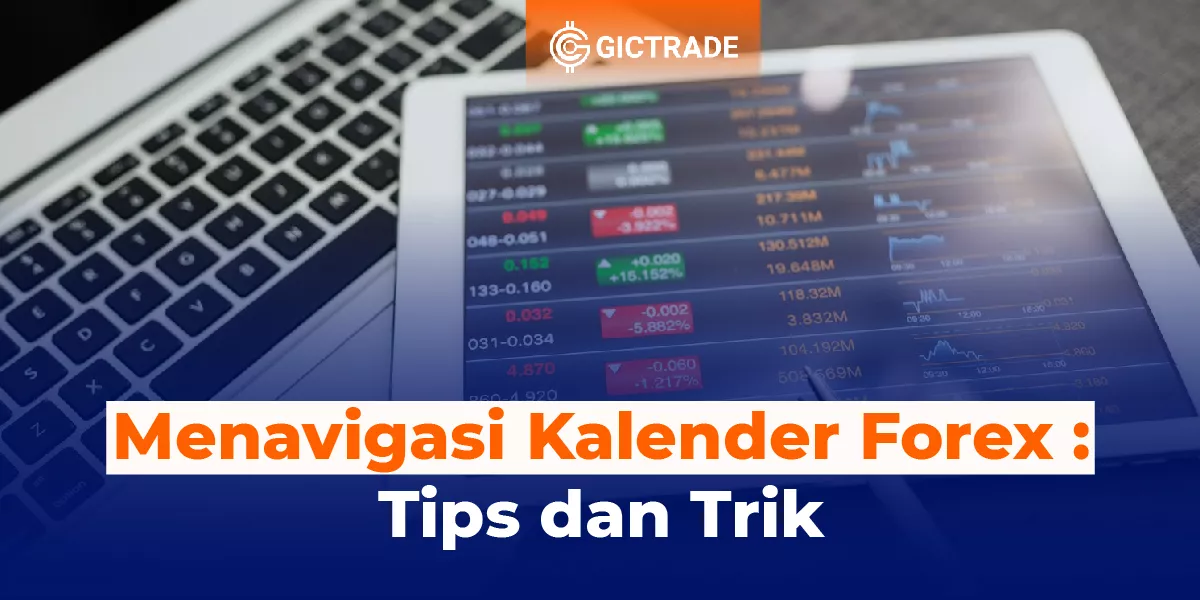How to Deal with Emotions in Trading - Welcome to this article that will discuss the psychology of forex trading and how to deal with emotions in trading. Forex trading is an activity that involves making decisions based on market analysis in order to make a profit.
However, in the trading process, traders often face emotional challenges that can affect their performance. In this article, we will discuss in detail the psychology of forex trading, as well as provide strategies and tips for dealing with emotions in trading. Keep reading to gain valuable insights.
Table of Contents
- Forex Trading Psychology: How to Deal with Emotions in Trading
- Secure Trading With Money Management at GIC
- Frequently Asked Questions (FAQs)
- Q: What is the psychology of forex trading?
- Q: Why is forex trading psychology important?
- Q: How to manage emotions in forex trading?
- Q: What to do when facing losses in forex trading?
- Q: How long does it take to master the psychology of forex trading?
- Q: Are there any recommended learning resources to master the psychology of forex trading?
- Conclusion
Forex Trading Psychology: How to Deal with Emotions in Trading

Forex trading is an activity that requires good market analysis skills. However, in addition, it is also important for a trader to master the psychology of forex trading. Uncontrolled emotions can interfere with rational decision-making and lead to financial losses. Here are some ways to deal with emotions in forex trading:
1. Creating a Detailed Trading Plan
The psychology of forex trading can be managed properly through good planning. Before starting trading, it is important for a trader to create a detailed trading plan. The trading plan should include a clear entry and exit strategy, stop loss and take profit levels, and proper position sizing. By having a detailed plan, a trader can reduce the influence of emotions when facing unexpected market situations.
2. Using Stop Loss and Take Profit
Stop loss and take profit are important instruments in forex trading. Stop losses are used to protect the trader's capital from uncontrolled losses, while take profits are used to secure profits.
Stop Loss
Stop loss is a price level predetermined by a trader to limit losses on a particular trading position. In forex trading, price fluctuations can be very rapid and volatile, so it is important to have a stop loss set wisely. When the market price reaches the stop loss level, the trading position is automatically closed to avoid bigger losses. For example, if a trader opens a long position on the EUR/USD currency pair at the level of 1.2000 and sets a stop loss at the level of 1.1950, it means that if the market price falls to 1.1950, the trading position will be closed automatically. By using a stop loss, a trader can protect his capital from excessive losses if the market moves against the trading position.
Take Profit
Take profit is the price level set in advance by a trader to lock in profits on a trading position. When the market price reaches the take profit level, the trading position is automatically closed to realize the profit.
For example, if a trader opens a short position on the GBP/USD currency pair at the level of 1.4000 and sets a take profit at the level of 1.3800, it means that if the market price drops to 1.3800, the trading position will be closed automatically. By using take profit, a trader can secure the profits that have been made before the market price changes.
Using stop loss and take profit is an important strategy in managing risk in forex trading. By determining the appropriate stop loss and take profit levels, a trader can have a clear plan for dealing with market price movements. It also helps to reduce the influence of emotions in trading decision-making. It is important to remember that stop loss and take profit levels should be set based on good market analysis. Also, keep in mind that market conditions can change quickly, and stop loss and take profit levels can be adjusted if needed.
3. Managing Risk Well
Good risk management is the key to success in forex trading. A trader must be able to recognize the risks that may occur in each trading position and manage them well. Here are some steps that can be taken to manage risk well:
- Determining Risk Tolerance: Every trader has a different risk tolerance. It is important to determine the extent to which you are prepared to accept losses before you start trading. By determining your risk tolerance, you can set the size of your position and limit the amount of losses you can bear.
- Using Stop Loss: Using stop losses is one of the effective ways to manage risk in forex trading. A stop loss is a pre-set price level to close a trading position if the market price moves against you. By using a stop loss, you can limit potential losses and protect your trading capital.
- Portfolio Diversification: Managing risk also involves diversifying a portfolio. Don't allocate all your capital to one type of asset or trading instrument. Instead, spread your risk by diversifying across multiple currency pairs or other instruments. By diversifying, you can reduce the negative impact of unfavorable price movements on one particular asset.
- Avoiding Overtrading: Overtrading is a condition in which a trader makes too many transactions in a short period of time. This can result in uncontrolled losses. It is important to avoid overtrading and only make transactions that are based on good market analysis and tested strategies.
- Setting the Right Position Size: The right position size is important in managing risk. Do not take positions that are too large so that they can result in significant losses if the market moves against you. As a general rule, the risk per transaction should not exceed 2-3% of your total trading capital.
- Follow a Trading Plan: A trading plan is a guide that must be followed with discipline. The trading plan includes entry and exit strategies, stop loss and take profit levels, and other risk management rules. By following the trading plan you have created, you can avoid the influence of emotions in your trading decisions and maintain consistency in managing risk.
Managing risk well is important to maintain successful trading in the long term. By understanding the risks and taking the right steps to manage them, you can increase your chances of success in forex trading. Remember that forex trading involves risk, and no method can guarantee a definite profit. Therefore, always be cautious and wise in making trading decisions.
Secure Trading With Money Management at GIC
Improve your earning management skills by starting trading on GIC! Not only trading, you can also learn about the world of stocks and forex trading if you are a beginner in the trading world.
GIC provides learning services about forex for you to learn, you can go through educational videos through the GIC Youtube channel to learn about forex through GIC journals that you can see directly on the website. Start registering now so you can start trading with GICTrade.
4. Maintaining Discipline
Discipline is an important quality in forex trading. A trader must have high discipline to follow a predetermined trading plan. Sometimes, emotions can tempt you to make impulsive decisions that can be detrimental. By maintaining discipline, a trader can avoid emotional traps and stay focused on a tried-and-true trading strategy.
5. Learning from Experience
The psychology of forex trading also involves the ability to learn from experience. Every trader must have experienced failures and mistakes in trading. It is important not to get caught up in disappointment and despair. Instead, use every mistake as a learning to improve your trading skills in the future. With a positive attitude and learning from experience, a trader can develop a strong psychology in forex trading.
Frequently Asked Questions (FAQs)
Q: What is the psychology of forex trading?
A: Forex trading psychology refers to the influence of individual emotions and psychology in trading decision-making. It involves managing emotions such as fear, greed, and despair in order to achieve better trading results.
Q: Why is forex trading psychology important?
A: The psychology of forex trading is important because uncontrolled emotions can interfere with rational decision-making and affect trading performance. By mastering the psychology of trading, a trader can manage emotions well and improve trading results.
Q: How to manage emotions in forex trading?
A: Some ways to manage emotions in forex trading are to create a detailed trading plan, use stop loss and take profit, manage risk well, maintain discipline, and learn from experience.
Q: What to do when facing losses in forex trading?
A: When facing losses in forex trading, it is important to stay calm and not panic. Re-evaluate your trading strategies and market analysis, and learn from mistakes that have occurred. It is also important to manage risks well and not make impulsive decisions.
Q: How long does it take to master the psychology of forex trading?
A: Mastering the psychology of forex trading is an ongoing process. Each individual can have a different time in developing trading psychology skills. It is important to keep learning, practicing, and developing patience and discipline in trading.
Q: Are there any recommended learning resources to master the psychology of forex trading?
A: There are many recommended learning resources to master the psychology of forex trading. Some of the resources you can use are books on trading psychology, seminars or webinars on trading psychology, and consultations with more experienced traders.
| Also Read : Tips to Avoid Overtrading in Forex Trading, Achieve Maximum Profit! |
Conclusion
In forex trading, psychology plays a very important role. Overcoming emotions in trading is a challenge that every trader must face. By mastering the psychology of forex trading, a trader can manage emotions well and improve trading performance. In this article, we have discussed several ways to deal with emotions in forex trading. Always remember that trading psychology is an ongoing journey, so keep learning, practicing, and being consistent in developing the quality of your trading psychology.
 Last:
Last: 






